An emergency contact form is a crucial document that provides essential information about an individual in case of an emergency. It contains personal details, contact information, and other relevant information that can be used to quickly identify and locate the individual in case of an emergency.
This form is commonly used by schools, workplace, or healthcare organizations to ensure that their students, employees, or patients are protected and receive the necessary care in case of an emergency. It is important for individuals to update their emergency contact information regularly to ensure that it remains current and accurate. In this article, we will discuss the purpose of an emergency contact form, what information should be included, and how to create and use one effectively.
Table of Contents
What is emergency contact?

An emergency contact is a person or organization that is designated to be notified in case of an emergency situation involving an individual. The emergency contact is usually a family member, friend, or designated representative who can provide information, support, and assistance during an emergency. The emergency contact information is used to quickly locate and reach out to the individual’s designated contact in case of an emergency, such as an accident, injury, or sudden illness.
The emergency contact information is typically included in an emergency contact form, which is kept on file by schools, workplaces, or healthcare organizations. The purpose of having an emergency contact is to ensure that individuals receive the necessary care and support in case of an emergency and to quickly locate and contact the designated person who can provide assistance.
Emergency Contact Form Templates
An emergency contact form is used to collect information on who should be notified in the event someone is injured, becomes ill, or needs help in an emergency. Schools, employers, medical providers, and other organizations use standard emergency contact form templates.
The emergency contact form asks for the name, phone number, and relationship of one or more people who can be contacted on the individual’s behalf in case of emergency. For minors, parents or legal guardians would be listed as the emergency contacts. For adults, they can list a spouse, family member, friend, or other trusted person as their emergency contact.
The completed emergency contact form is kept on file by the organization. In the event they are unable to reach the individual, they would then contact the person(s) listed on the form. Emergency contacts may be asked to make medical decisions or pick up the individual if needed. Keeping up-to-date emergency contact information is important, so individuals should update their form if their contacts change. The emergency contact form allows organizations to quickly notify necessary people in the event of an emergency involving one of their members.
Why are emergency contact forms so important?
Emergency contact forms are important for several reasons:
Quick Response: In case of an emergency, quick action is often essential to ensure the well-being of an individual. Emergency contact forms provide essential information about the individual, such as their name, address, phone number, and medical information, which can be used to quickly identify and locate them.
Safety: Emergency contact forms are used to ensure the safety of individuals in various situations, such as accidents, illnesses, or other emergencies. Having accurate and up-to-date information on file can help to ensure that individuals receive the necessary care and support in case of an emergency.
Communication: In case of an emergency, it is essential to quickly contact the individual’s designated emergency contact. Emergency contact forms provide a clear and concise way to communicate this information to relevant parties, such as schools, workplaces, or healthcare organizations.
Legal Protection: Emergency contact forms can also provide legal protection for individuals and organizations. For example, schools or healthcare organizations can use the information contained in the emergency contact form to make informed decisions about the care and treatment of an individual in case of an emergency.
When do you need emergency contact form?
An emergency contact form is needed in a variety of situations, including:
Schools: Schools often require students to provide emergency contact information in case of an accident, illness, or other emergency situation.
Workplaces: Workplaces may require employees to provide emergency contact information to ensure that they can be quickly located and contacted in case of an emergency while at work.
Healthcare Organizations: Healthcare organizations may require patients to provide emergency contact information to ensure that they receive the necessary care and support in case of an emergency.
Sports Teams and Clubs: Sports teams and clubs may require participants to provide emergency contact information to ensure that they receive the necessary care and support in case of an injury or other emergency.
Travel and Adventure Activities: Travel and adventure activities, such as camping, hiking, or rafting, may require individuals to provide emergency contact information to ensure that they can be quickly located and contacted in case of an emergency.
Benefits of having emergency contact form
Having an emergency contact form has several benefits, including:
Quick Response: In case of an emergency, quick action is often essential to ensure the well-being of an individual. Emergency contact forms provide essential information about the individual, such as their name, address, phone number, and medical information, which can be used to quickly identify and locate them.
Safety: Emergency contact forms are used to ensure the safety of individuals in various situations, such as accidents, illnesses, or other emergencies. Having accurate and up-to-date information on file can help to ensure that individuals receive the necessary care and support in case of an emergency.
Communication: In case of an emergency, it is essential to quickly contact the individual’s designated emergency contact. Emergency contact forms provide a clear and concise way to communicate this information to relevant parties, such as schools, workplaces, or healthcare organizations.
Legal Protection: Emergency contact forms can also provide legal protection for individuals and organizations. For example, schools or healthcare organizations can use the information contained in the emergency contact form to make informed decisions about the care and treatment of an individual in case of an emergency.
Peace of Mind: Having an emergency contact form on file can also provide peace of mind for individuals and their families. Knowing that essential information about their well-being is readily available in case of an emergency can help to ease anxiety and provide a sense of security.
Overall, having an emergency contact form has numerous benefits that can help to ensure the safety and well-being of individuals in case of an emergency. It is important for individuals to keep their emergency contact information up-to-date to ensure that they are prepared and protected in case of an emergency.
How do you write an emergency contact
Writing an emergency contact form requires several steps, including:
Gather Information
Before writing an emergency contact form, you need to gather essential information about the individual, such as their name, address, phone number, and medical information. You may also need to gather information about their designated emergency contact, such as their name, relationship to the individual, and contact information.
Determine the Purpose of the Form
Before writing an emergency contact form, it is important to determine the purpose of the form. For example, is it for a school, workplace, healthcare organization, sports team, or adventure activity? Knowing the purpose of the form will help you to determine what information needs to be included.
Choose a Format
There are several formats for emergency contact forms, including paper forms, electronic forms, and phone apps. Choose a format that is convenient, easily accessible, and secure for both the individual and the organization.
Write the Form
When writing the form, use clear and concise language to ensure that the information is easy to understand and fill out. Start with the individual’s personal information, including their name, address, phone number, and medical information. Next, include the designated emergency contact information, including their name, relationship to the individual, and contact information. Finally, include any additional information that is specific to the purpose of the form, such as medical conditions or allergies.
Include Instructions
Make sure to include clear instructions on how to fill out the form. This can include information on what information is required, how to fill out the form, and who to contact if there are any questions.
Review and Test the Form
Before using the form, make sure to review it carefully to ensure that it is complete and accurate. Test the form with a small group of individuals to make sure that it is easy to understand and fill out.
Store the Information Safely
Store the emergency contact information in a secure location to ensure that it is protected and only accessible by authorized individuals. If you are using electronic forms, make sure to use secure servers and encryption to protect the information.
Update the Information Regularly
It is important to regularly update the emergency contact information to ensure that it is accurate and up-to-date. Encourage individuals to update their information at least once a year, or more frequently if necessary.
Sample emergency contact form
Here is an example of a basic emergency contact form:
EMERGENCY CONTACT INFORMATION
Name: ______________________________
Address: _____________________________
Phone Number: _______________________
Medical Information: __________________
Designated Emergency Contact:
Name: ______________________________
Relationship to Individual: ____________
Phone Number: _______________________
Additional Information: _______________
Instructions:
- Fill out the form with accurate and up-to-date information.
- Provide all of the required information, including your personal information, designated emergency contact information, and any additional information that is specific to the purpose of the form.
- Keep the form in a secure and accessible location.
- Update the information on the form regularly to ensure that it is accurate and up-to-date.
- Contact us if you have any questions or concerns about the form.
FAQs
How do I make an emergency contact form?
To make an emergency contact form, include fields for the individual’s full name, home address, primary phone and email, as well as name, relationship, and phone numbers for at least one emergency contact. Leave room for medical information like health conditions, medications, and allergies. Use a simple template or create your own form with these essential fields.
What should be included on an emergency contact form?
An emergency contact form should include the individual’s full name, contact information, at least one emergency contact with name, relationship, and phone numbers, and relevant medical information like health conditions, medications, and allergies.
How do I make an emergency contact list for work?
To create an emergency contact list for work, have employees fill out a form with their own contact information and their chosen emergency contacts’ names, relationships, and phone numbers. Compile these into a master list or database that authorized personnel can access if needed. Store digital and hard copies securely.
How do you ask for emergency contact?
When asking someone for their emergency contact, explain why you need this information, ask for their preference on who they would like you to contact, and get the full name, relationship, and current phone numbers for this person. Avoid listing someone without their explicit consent.













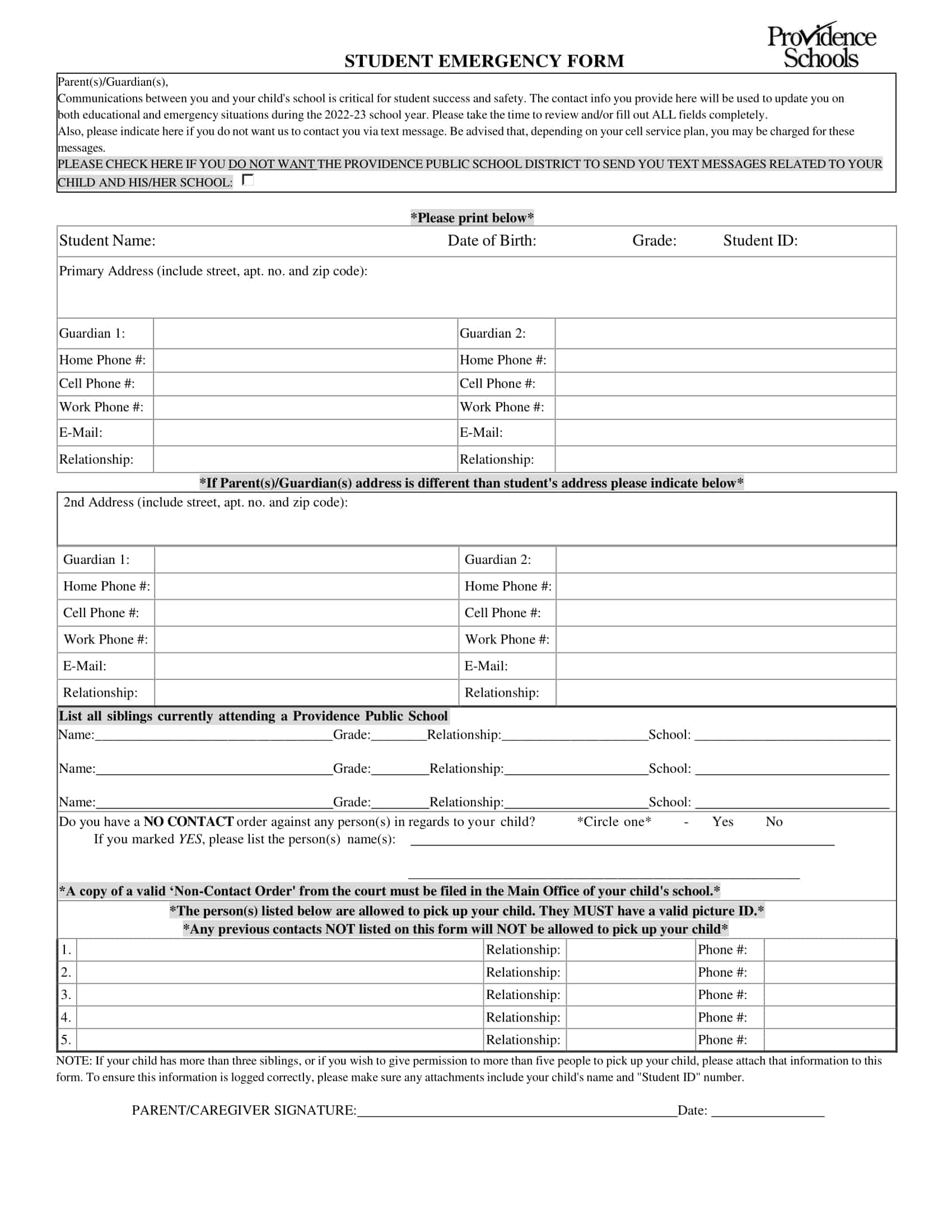











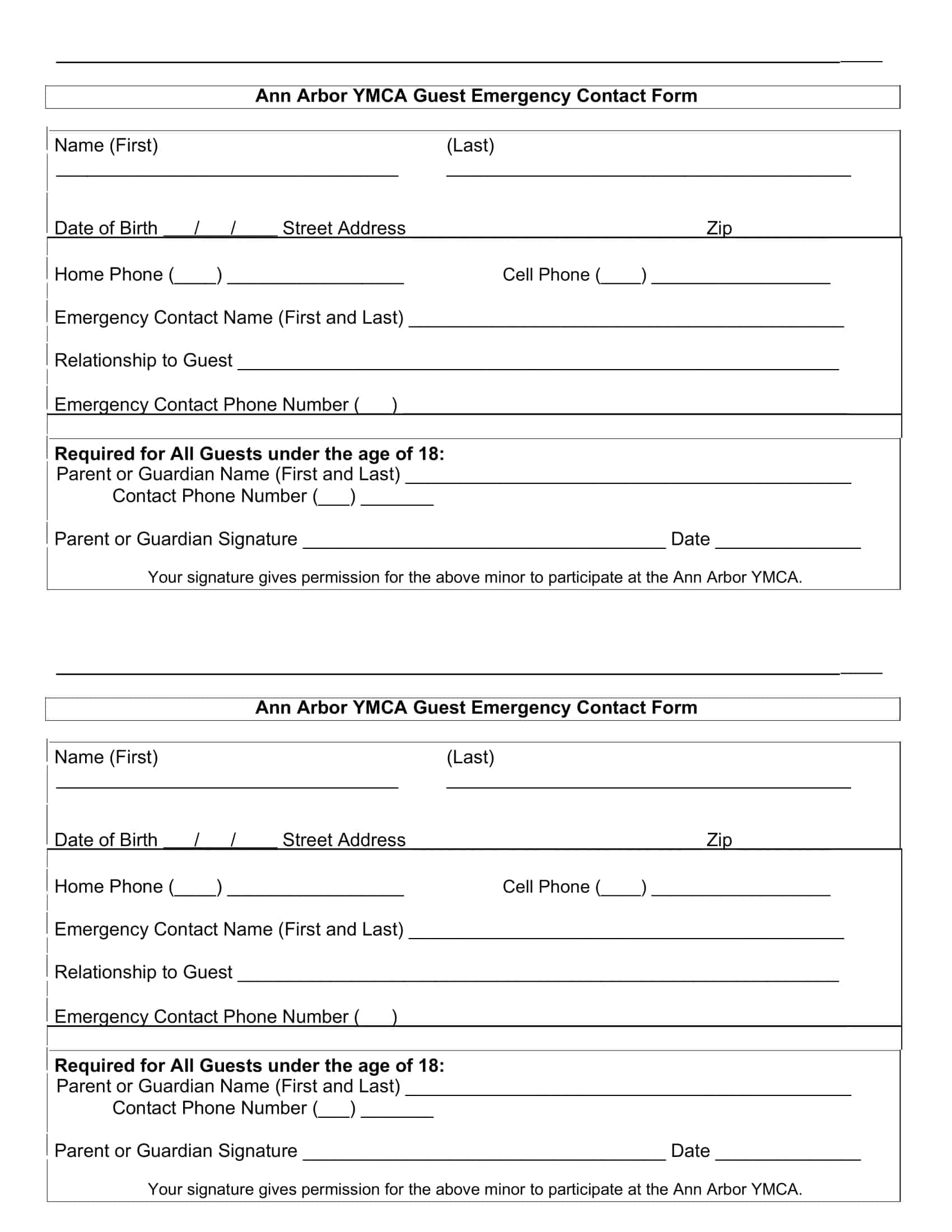
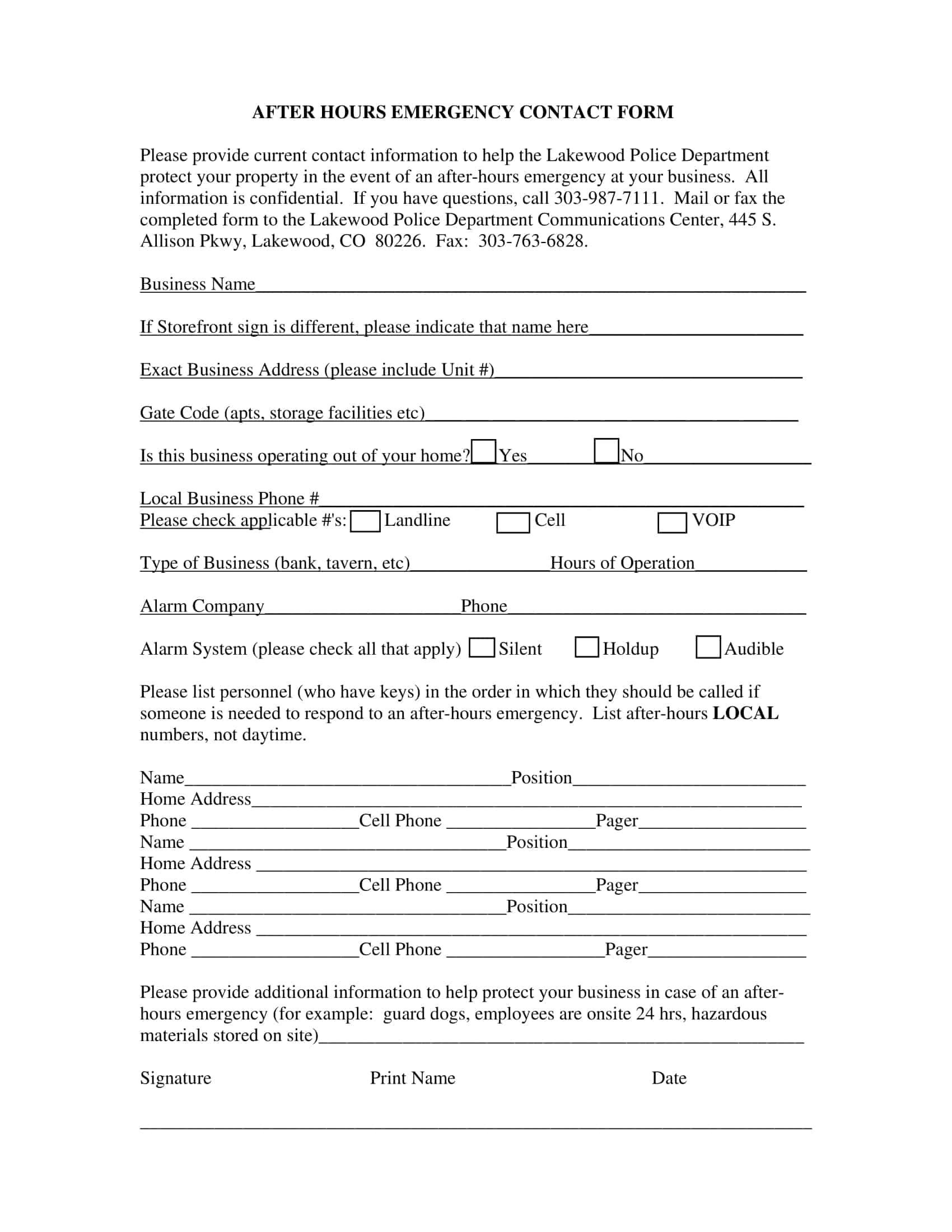


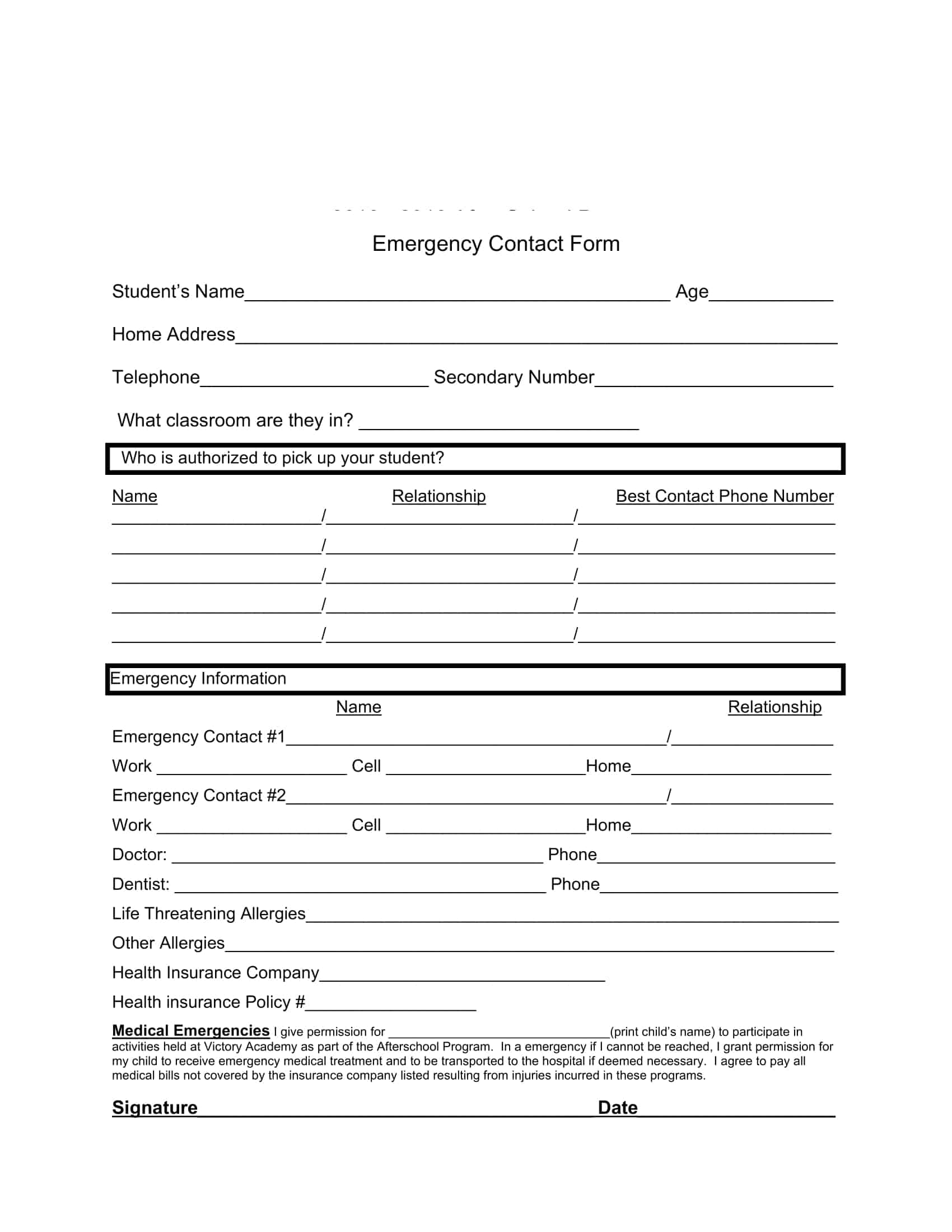

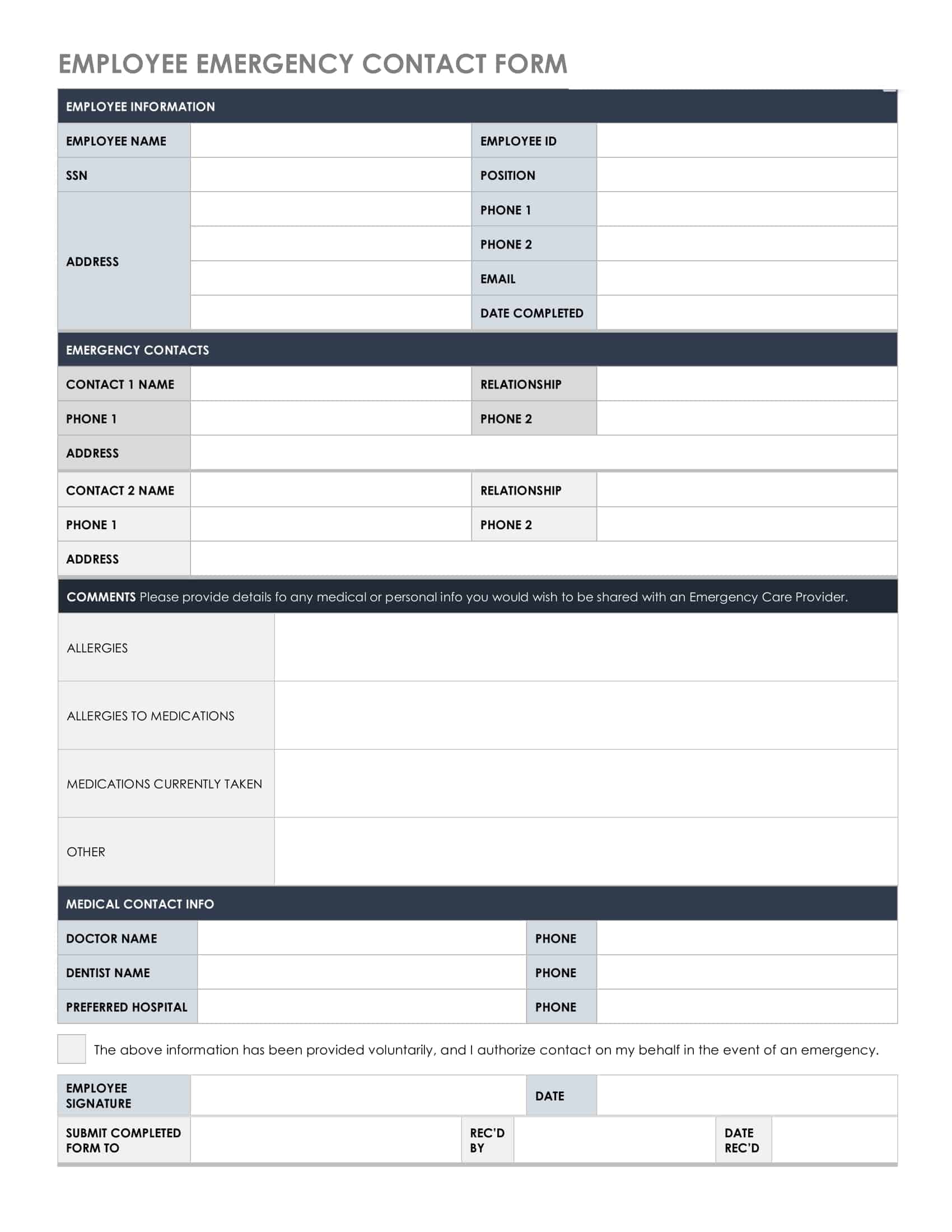

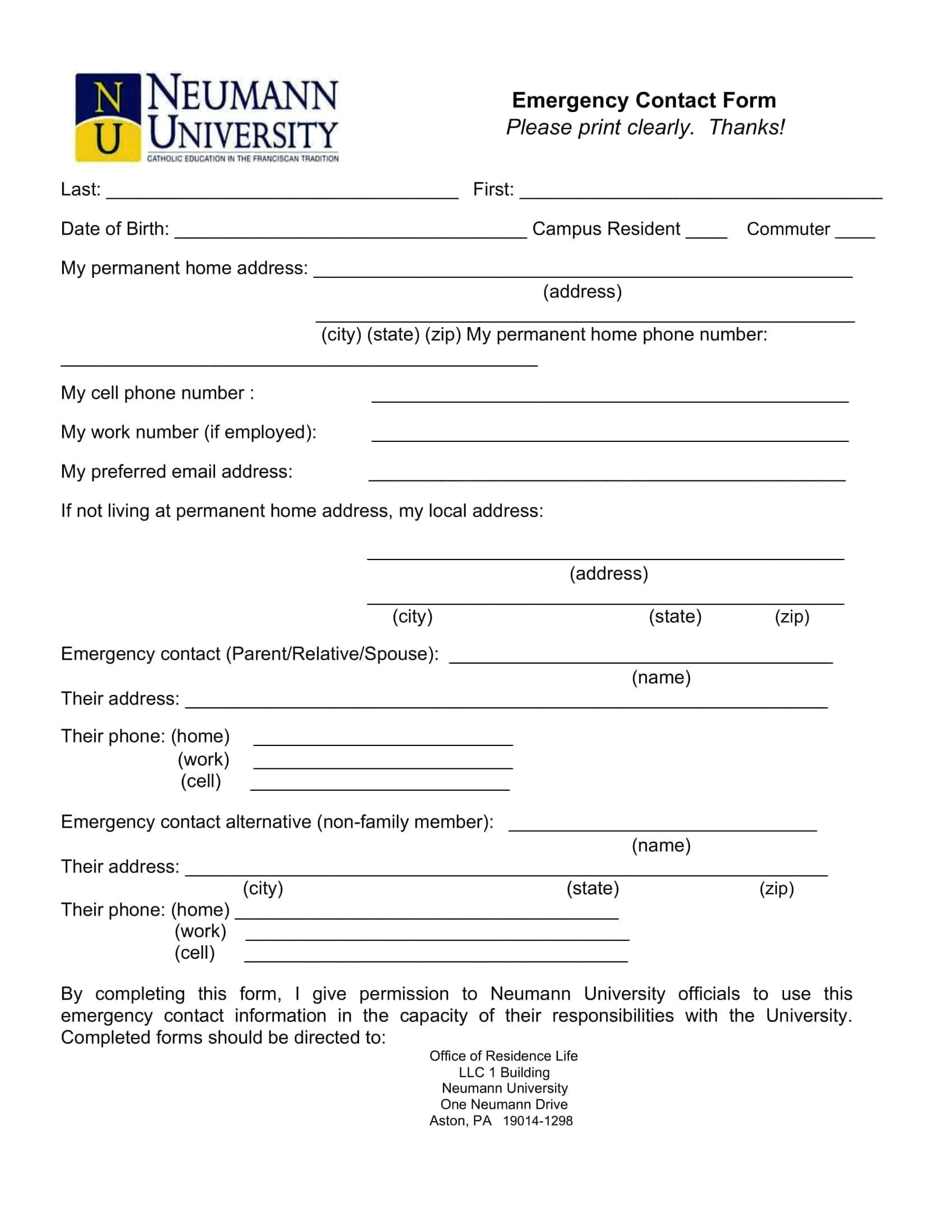


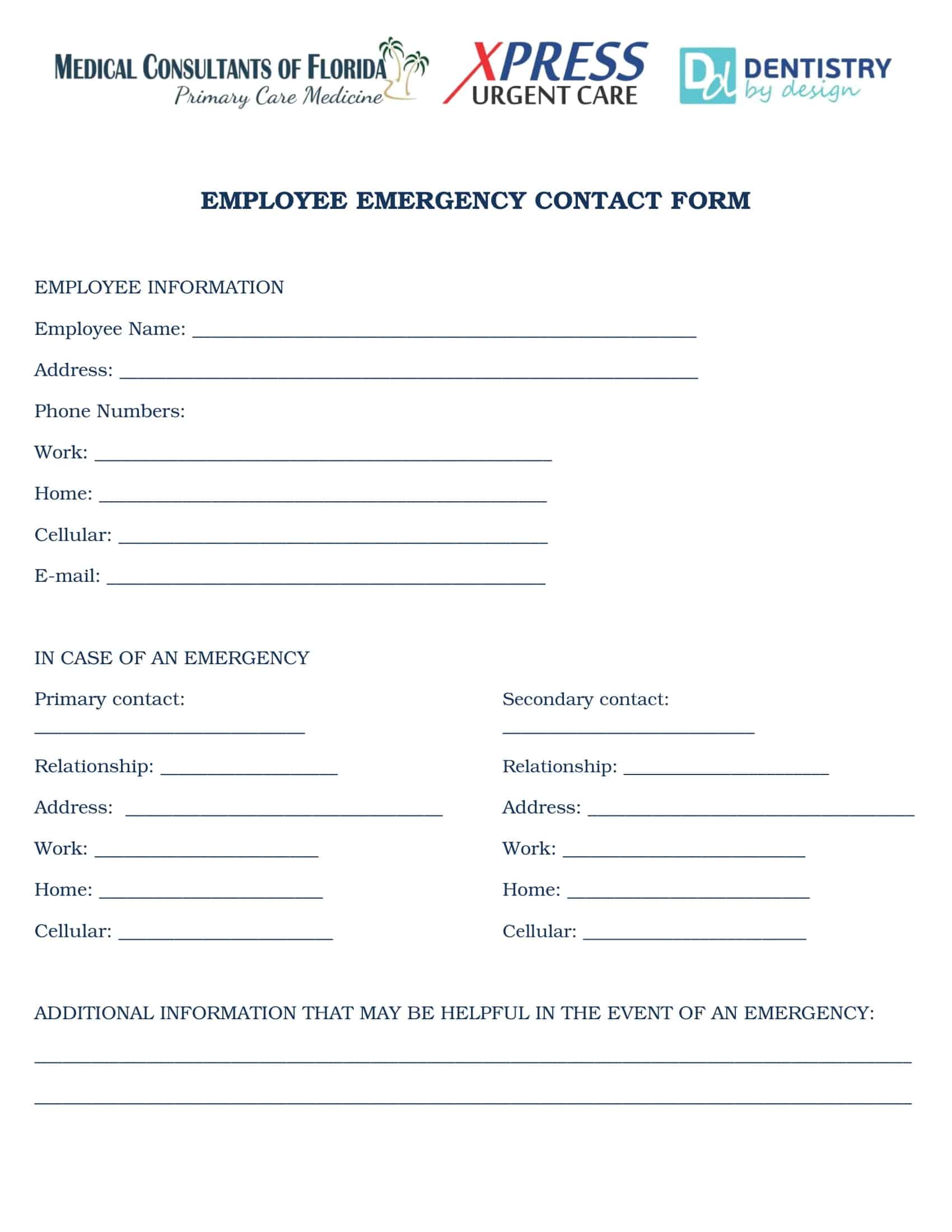


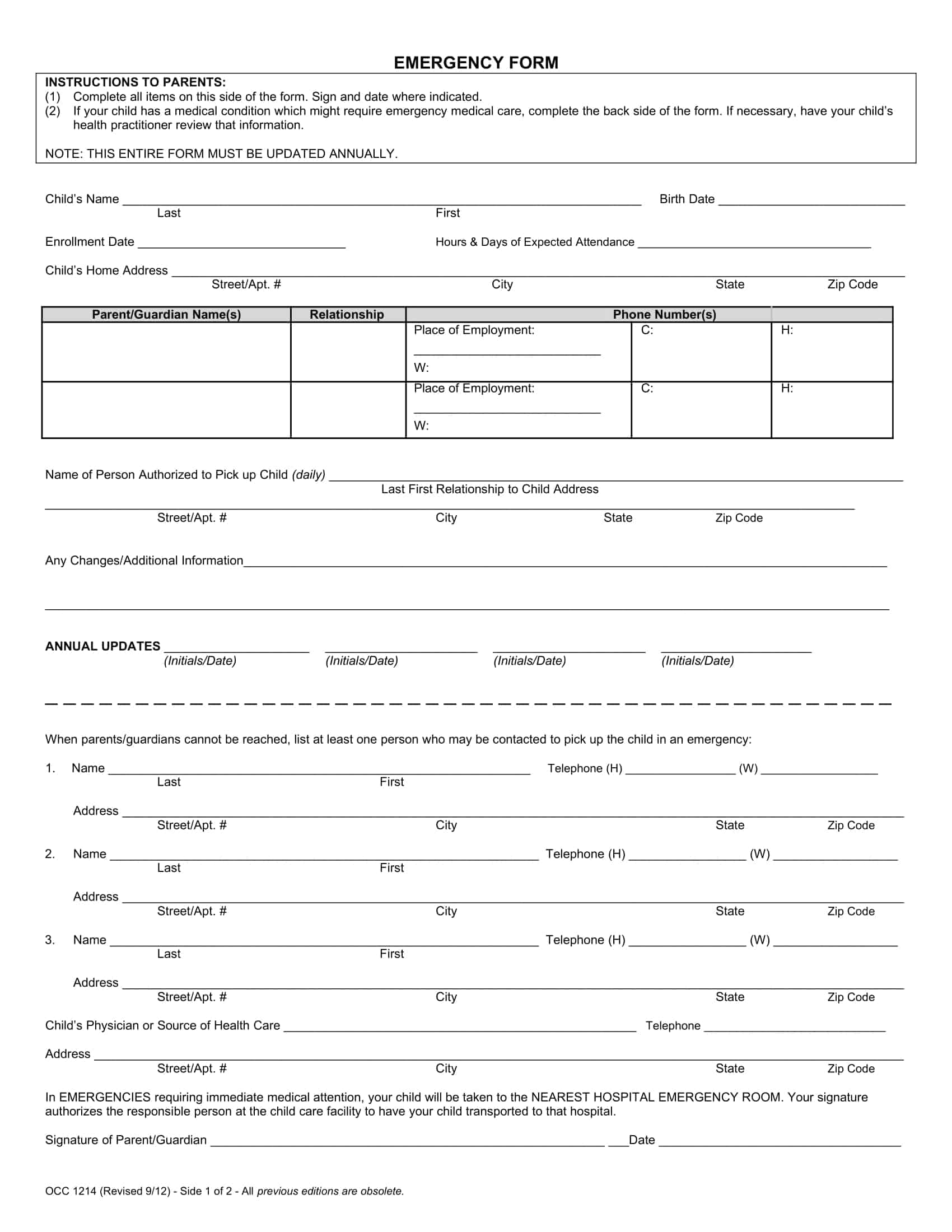


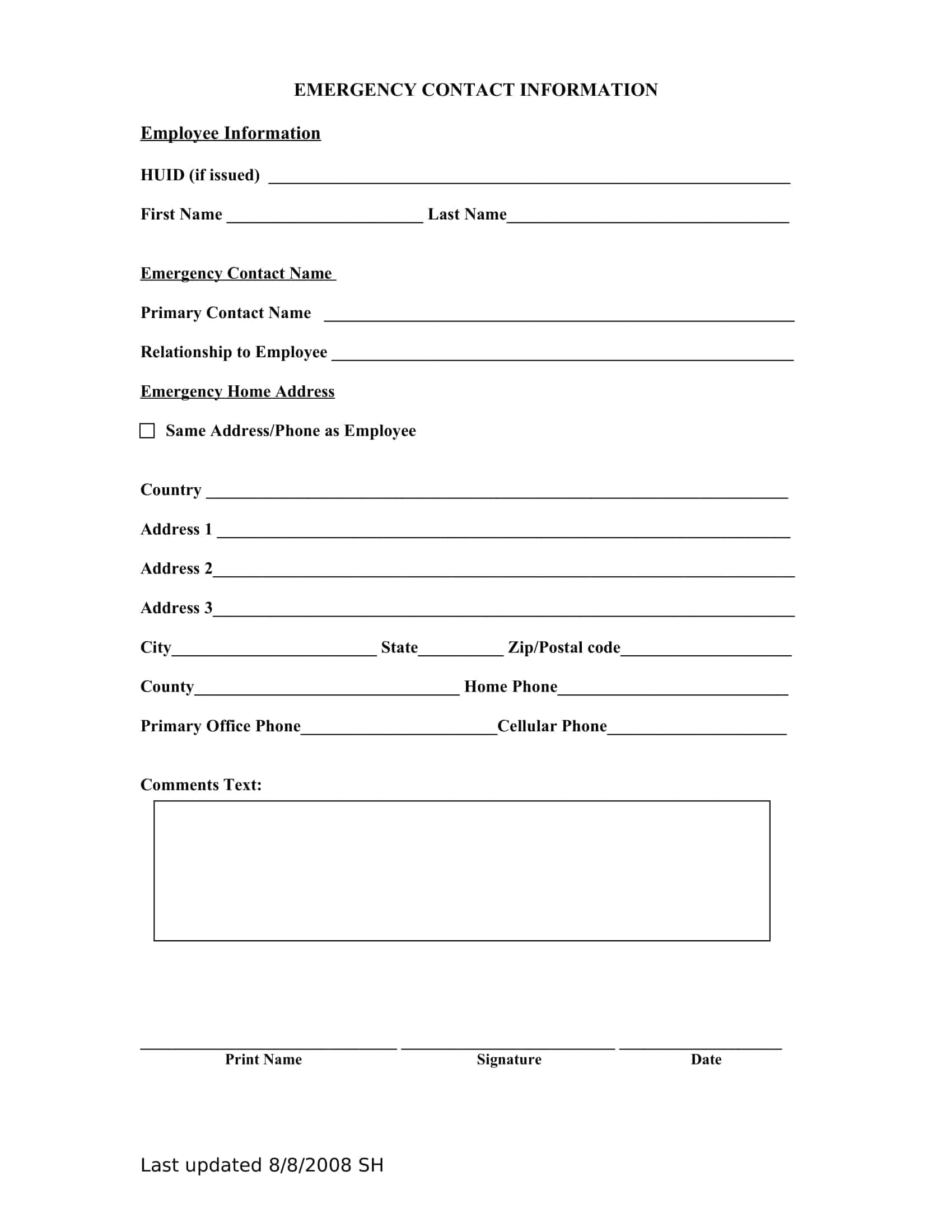
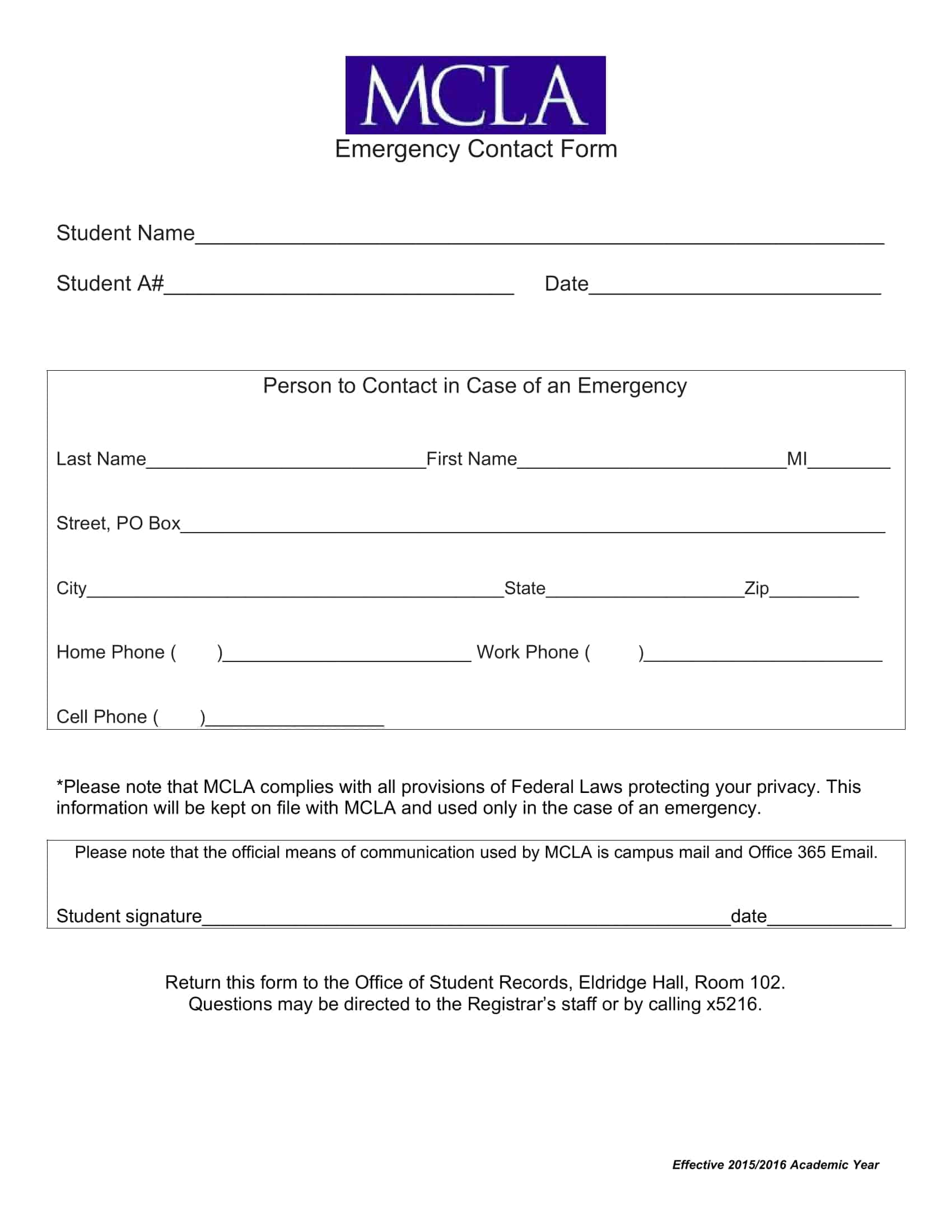











![Free Printable Roommate Agreement Templates [Word, PDF] 1 Roommate Agreement](https://www.typecalendar.com/wp-content/uploads/2023/06/Roommate-Agreement-150x150.jpg)
![Free Printable Credit Card Authorization Form Templates [PDF, Word, Excel] 2 Credit Card Authorization Form](https://www.typecalendar.com/wp-content/uploads/2023/06/Credit-Card-Authorization-Form-150x150.jpg)
![Free Printable Stock Ledger Templates [Excel,PDF, Word] 3 Stock Ledger](https://www.typecalendar.com/wp-content/uploads/2023/08/Stock-Ledger-150x150.jpg)
